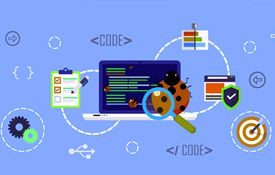Change is constant. What’s different today is the rate of change. Moore’s law resulted from the observation that that the rate of change in computing power is exponential. The products, services and software landscape appears just as dynamic. At the same time, we pretty much take for granted the ubiquitous presence of software running our lives and the conveniences and ease it brings.
The landscape of product development is constantly shifting— mobility is everything and everything thinks. From medical devices to toasters, from radio becoming Pandora, from cash, checks and credit cards becoming online bill pay becoming mPay— everything is run by software, and more software with logic capability is being deployed. The technologies landscape too is shifting— the Cloud, SaaS, virtualization, cross-platform/non-platform specific mobile apps to HTML5.
Many commentators on technology today state the PC is dead. How will this impact software development and how can test teams be best prepared for this new landscape? For starters, testing cannot remain the same. Software development today is more agile, less documented, faster and even more distributed—but that is last decade’s news. Testing has lagged software development but the future demands the lag must be reduced exponentially. This doesn’t mean that as testers we are behind the curve, there are teams already running tens of thousands of automated tests on hundreds of virtual environments against daily builds for global financial security systems. There are many very sophisticated test teams. Yet, even their landscape is changing as products and services change.
This issue of LogiGear Magazine examines the seismic shifts changing how we do product development and specifically how we test software. The landscape has changed. What we test has changed—how do we keep up? As much as we are looking at global trends, some people are already there.
This specific issue also reminds me of the mission of LogiGear Magazine. We want to provide a forum for learning new ideas, methods, practices, state-of-the-practice in software testing and a view into the broader landscape of software testing. I tend to focus on the project ahead of me and sometimes lose sight of the broader horizon. In this issue, Mandira Srivastava tells us why 2013 is the year of the cloud; I will discuss the changing software testing landscape; Pete Schmitt shows us how to leverage the cloud across your organization; Michael Vizard discusses how to get around issues of scale using virtualization; and Adrian Woodhead reviews the book, How Google Tests Software.
Since we moved in to a WordPress platform last year, we have built an archive of our past issues and also cross referenced all our content to be searchable on keywords for research on specific topics.
Also, Happy New Year. Happy 2013 and Year of the Snake in the lunar calendar. The Snake is intuitive, introspective, and refined. He can appear cunning and reticent and works very modestly in the business environment. The Snake will plot and scheme to make certain things turn out exactly as they want them to. Hmm. Sounds like many testers I know! Happy New Year.



















